The Tokina AT-X 24-70mm f/2.8 PRO FX (Tokina 24-70mm f/2.8) is a wide-angle to short-telephoto “fast” standard zoom, designed specifically for use on full-frame Canon or Nikon DSLRs.
Offering a versatile focal range with a fixed f/2.8 maximum aperture, it’s an ideal lens for weddings, events, portraits, and reportage, as well as for general use photography, making it a workhorse lens for many pros and photo enthusiasts.
This useful and popular lens has plenty of market competition with two own-brand options as well as with third-party manufacturers such as Tamron and Sigma offering pro-grade alternatives. The Tokina 24-70mm f/2.8 falls squarely into this pro category, offering solid build quality, as well as an ultrasonic autofocus motor and Tokina’s unique manual focus clutch system.
Costing $999, the Tokina 24-70mm f/2.8 isn’t cheap, but if it offers comparable image quality, it could represent great value compared to such own-brand options as the $1749 Canon EF 24-70mm f/2.8L II USM or the $1797 Nikon 24-70mm f/2.8G ED. We ran the Canon EF version of the Tokina 24-70mm f/2.8 though our industry-standard tests to see how it shaped up.
Key specifications:
- F/2.8 maximum aperture
- Canon EF lens mount
- Manual focus clutch system
- 82mm filter thread
- Ultrasonic AF motor
- 15 elements in 11 groups
- Length 107.5mm
Measurement: Excellent resolution f/4 to f/11
Achieving its highest DxOMark overall score of 32 points tested on the EOS 5DS R, the Tokina 24-70mm f/2.8 ranks in joint second place overall for standard zooms alongside the Tamron SP 24-70mm f/2.8 (also with 32 points), and just behind the own-brand Canon 24-70mm f/2.8L II USM with 35 points.
Interestingly, while these three lenses occupy the same podium positions tested on the lower-resolution Canon EOS 5D Mark III, the scores are a little closer. In fact, all three achieve the same 18 P-Mpix sharpness score on Canon’s popular semi-pro 5D Mark III, indicating that although the Canon 24-70mm f/2.8L does a better job of maximizing the resolution potential of the 50Mp 5DS R, its advantage is reduced on lower-resolution DSLR sensors.
Returning to the results on the EOS 5DS R, the Tokina’s P-Mpix map indicates great sharpness at most settings. Resolution between apertures f/4 to f/11 is excellent at all focal lengths, both in the center and at the edges of the frame. At the maximum f/2.8 aperture — a crucial setting for many photographers — sharpness remains reasonably uniform, but overall resolution diminishes the more you zoom in. Expect slightly softer results using the narrower f/16 and f/22 apertures, too, where the effects of diffraction also reduce resolution.
Distortion is well-controlled, with minor 0.7% barrel distortion at 24mm and 0.5% pin-cushion distortion at 70mm having limited impact on straight lines. The lens achieves good light transmission of 2.9TStop between 24-50mm, and although transmission drops a little (to 3.1 TStop) when fully zoomed in at 70mm, it’s not a significant difference.
Full-frame standard zoom lenses are often prone to chromatic aberration at some settings due to the varied wide-angle to short-telephoto range, making it optically difficult to perfectly align all light wavelengths at all apertures. The Tokina 24-70mm doesn’t fare too badly overall, however: the global map identifies less aberration at the long end of the focal range, with some outer-field fringing noticeable at wider focal lengths. The problem is particularly noticeable at 24mm, where post-production correction is advised at all aperture settings.
Vignetting, or corner shading, is also well-controlled overall and is either mild or non-existent at apertures between f/5.6 to f/22. At f/2.8 and f/4, the problem is a little more pronounced, as the lens struggles to achieve the same intensity of light out to the edges of the frame at these wider aperture settings, and with vignetting approaching –2Ev at 24mm and 70mm f/2.8, some post-production correction is advised.
Tokina 24-70mm f/2.8 vs. Tamron SP 24-70mm f/2.8 vs. Canon AT-X 24-70mm f/2.8
Head-to-head against the more expensive $1749 Canon 24-70mm f/2.8L II and the $1299 Tamron SP 24-70mm f/2.8 alternatives, the Tokina certainly holds its own with some comparable lens metrics scores.
Tested on an EOS 5DS R, the Canon own-brand lens comes out on top overall, scoring 35 points compared to 32 points for both third-party alternatives, which is largely due to the Canon lens’s improved sharpness. With a sharpness score of 32 P-Mpix for the Canon, compared to 24 P-Mpix for the Tamron and 25 P-Mpix for the Tokina, the own-brand Canon lens delivers excellent edge-to-edge resolution at all apertures from f/2.8 to f/11. In comparison, the Tamron and Tokina are uniformly sharp between f/4 to f/11 at all focal lengths, but aren’t as consistent as the Canon at the maximum f/2.8 aperture, with some edge softness creeping in. The Tokina 24-70mm f/2.8 is very good between 24-35mm at f/2.8, but edge resolution drops the further you zoom in.
The same is true of the Tamron SP 24-70mm f/2.8, which although uniformly sharp at 24mm f/2.8, isn’t as good between 35mm and 70mm. Diffraction starts to play a part at the narrower f/16 and f/22 apertures, reducing overall resolution on all three lenses. The Tokina is a tiny bit better than the Tamron at f/22, however, which just gives it the edge in the overall score, but there’s not much in it.
Results are close for the other lens metrics, too, with little difference among these three lenses for transmission or distortion. While it’s true that the Tamron handles chromatic aberration a little better, the Tokina suffers less vignetting; but bear in mind that both of these artefacts can be easily corrected in post-production.
Conclusion: Great image quality
The Tokina 24-70mm f/2.8 is an excellent pro-grade, third-party standard zoom lens for Canon full-frame DSLRs. Overall, it delivers image quality on par with another popular third-party option, the Tamron SP 24-70mm f/2.8, and offers excellent sharpness between f/4 to f/11 at all focal lengths.
Tested on the 50Mp EOS 5DS R, the own-brand Canon EF 24-70mm f/2.8L II offers increased resolution at the maximum f/2.8 setting, where it delivers more uniform sharpness compared to the Tokina. This could be a significant factor for photographers regularly shooting wide-open, but it’s worth noting the advantage is limited to the 5DS R, with f/2.8 sharpness analysis showing that the resolution is more comparable on lower-resolution DSLRs, such as the 5D Mark III. At $999, the Tokina 24-70mm f/2.8 is significantly cheaper than both the Canon and Tamron equivalents, too. Yes, it lacks image stabilization, which could be important depending on what you’re shooting, but otherwise offers a solid build, a snappy autofocus motor, and manual focus override system. Most importantly, image quality is very good, making the Tokina 24-70mm f/2.8 a very attractive third-party option for Canon full-frame photographers.


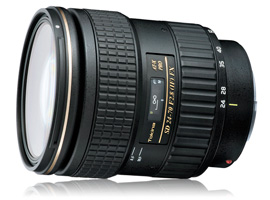





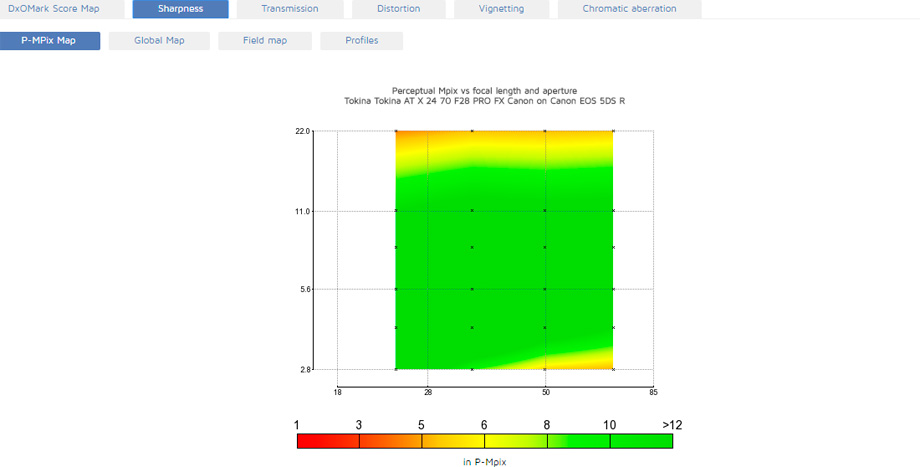
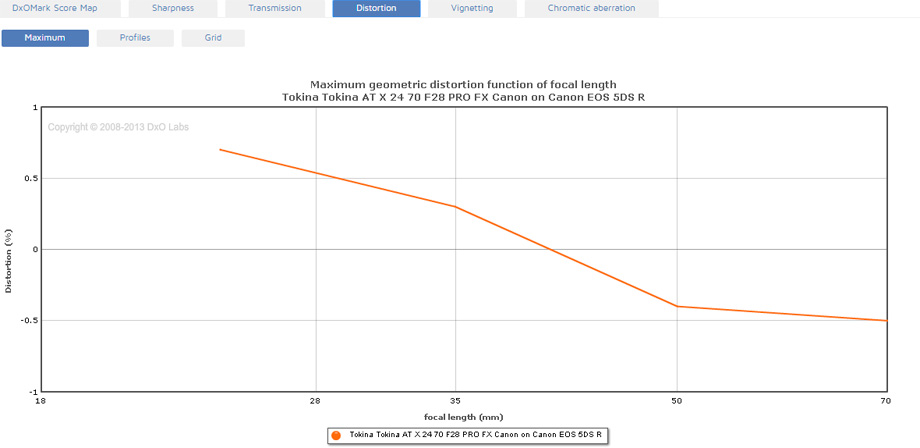
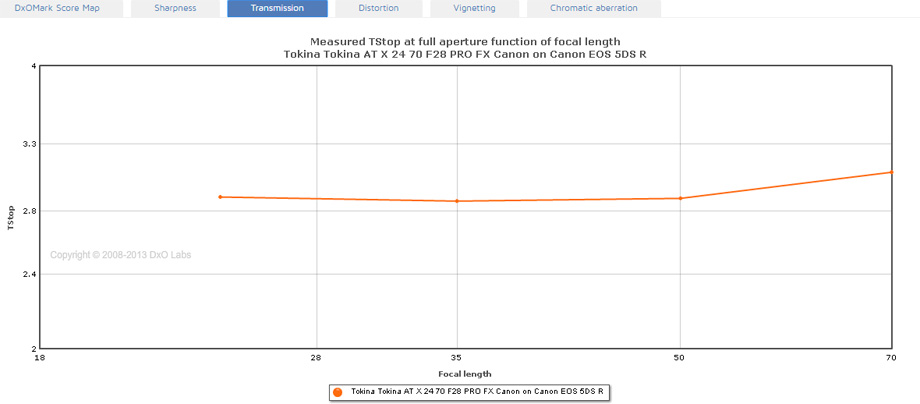

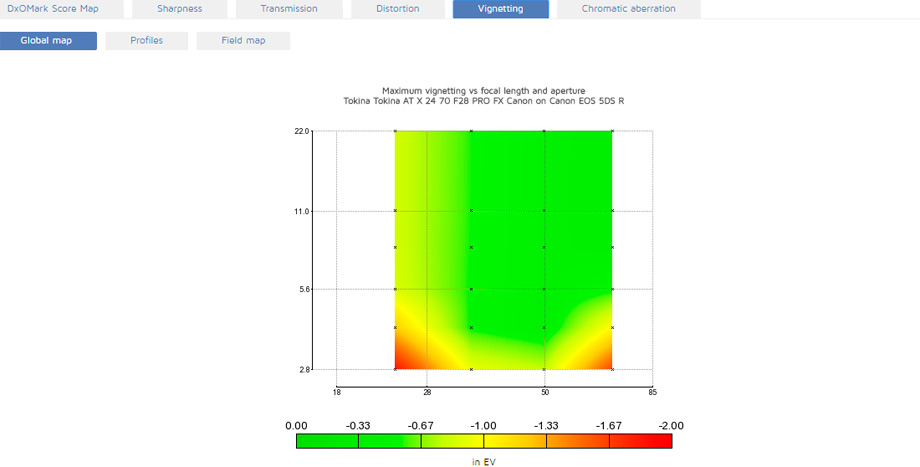
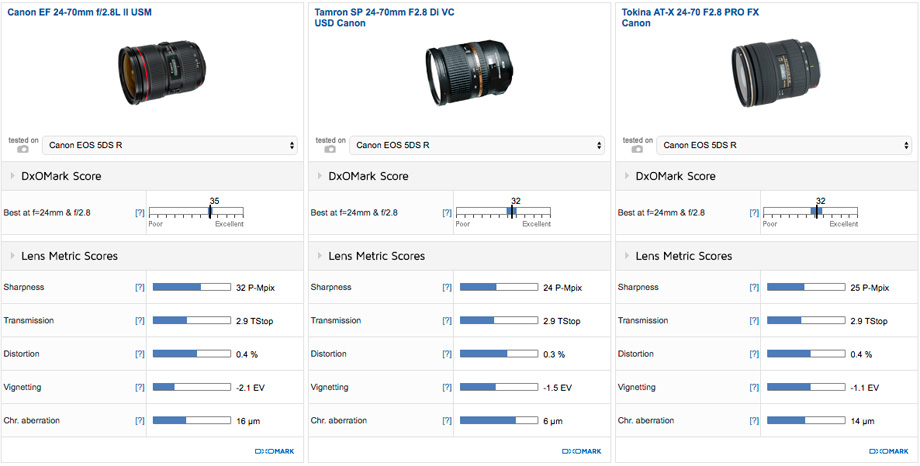
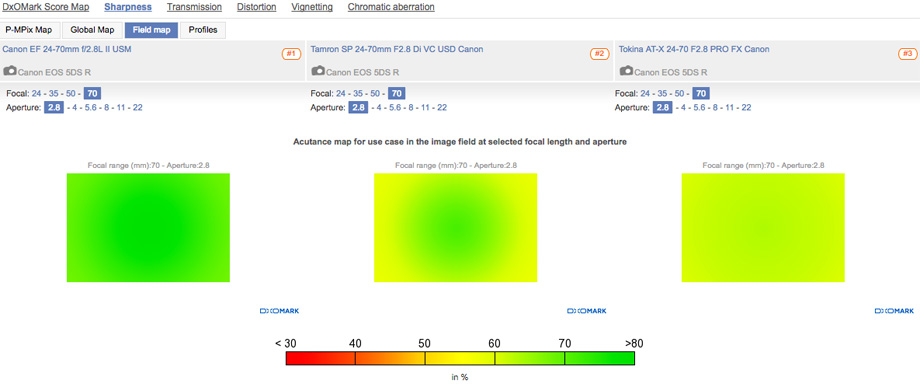
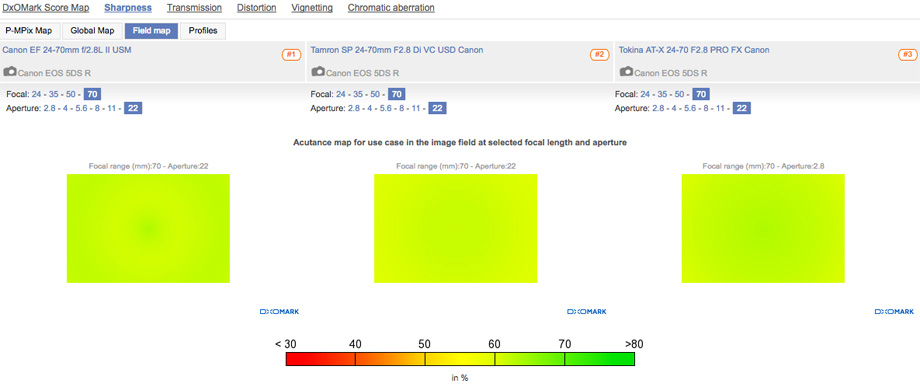
DXOMARK encourages its readers to share comments on the articles. To read or post comments, Disqus cookies are required. Change your Cookies Preferences and read more about our Comment Policy.